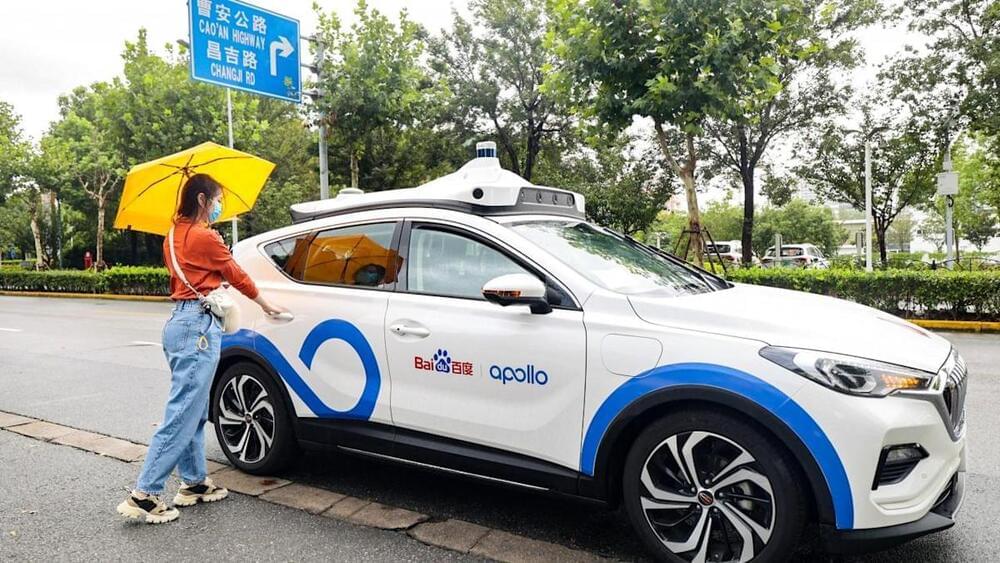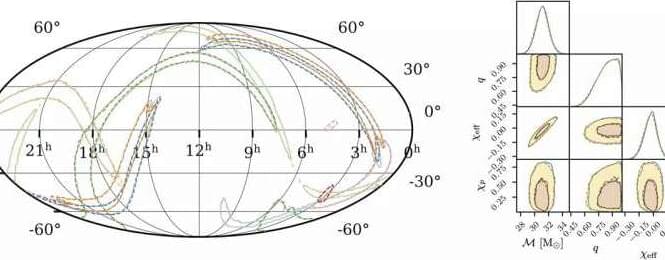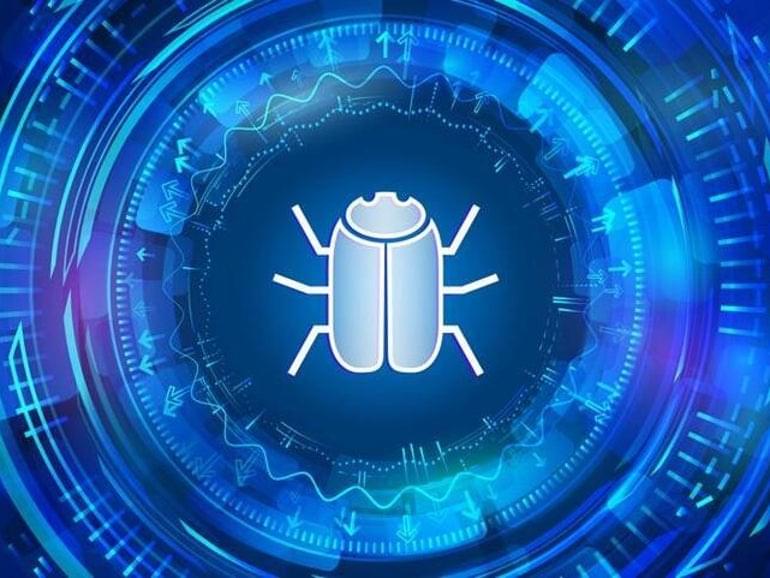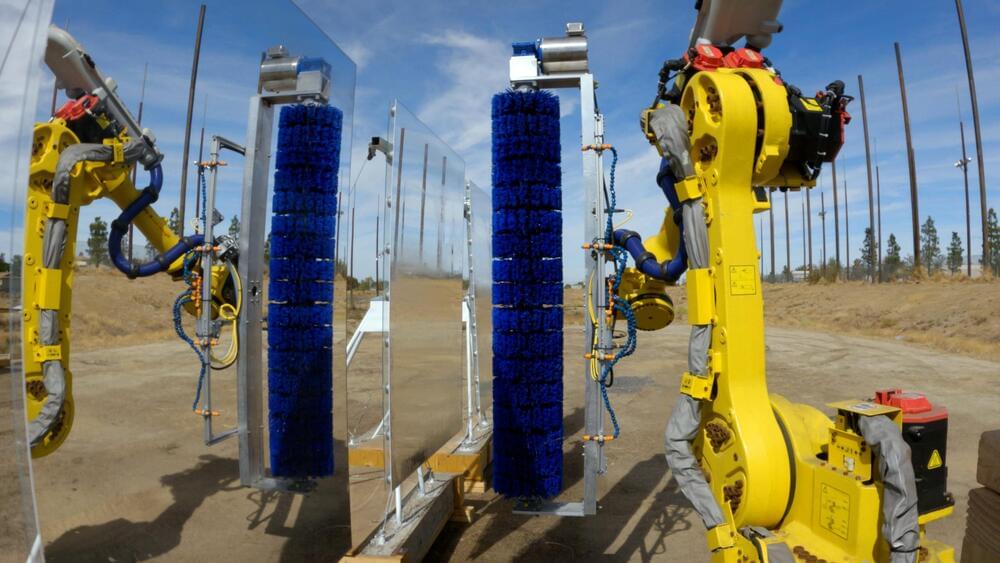Via NowThis Earth




Two operators including Chinese internet search giant Baidu have been given the green light to start charging passengers to use their autonomous taxis in Beijing.
Baidu and Pony AI became the first companies to be granted licences by mainland Chinese authorities to launch their driverless cab services commercially following successful trial periods.
On Thursday, the Beijing High-level Automated Driving Demonstration Area gave permission for Baidu and Pony AI to charge fees for their so-called robotaxis in a designated area of the capital covering 60 square kilometres.

Black holes are one of the greatest mysteries of the universe—for example, a black hole with the mass of our sun has a radius of only 3 kilometers. Black holes in orbit around each other emit gravitational radiation—oscillations of space and time predicted by Albert Einstein in 1916. This causes the orbit to become faster and tighter, and eventually, the black holes merge in a final burst of radiation. These gravitational waves propagate through the universe at the speed of light, and are detected by observatories in the U.S. (LIGO) and Italy (Virgo). Scientists compare the data collected by the observatories against theoretical predictions to estimate the properties of the source, including how large the black holes are and how fast they are spinning. Currently, this procedure takes at least hours, often months.
An interdisciplinary team of researchers from the Max Planck Institute for Intelligent Systems (MPI-IS) in Tübingen and the Max Planck Institute for Gravitational Physics (Albert Einstein Institute/AEI) in Potsdam is using state-of-the-art machine learning methods to speed up this process. They developed an algorithm using a deep neural network, a complex computer code built from a sequence of simpler operations, inspired by the human brain. Within seconds, the system infers all properties of the binary black-hole source. Their research results are published today in Physical Review Letters.
“Our method can make very accurate statements in a few seconds about how big and massive the two black holes were that generated the gravitational waves when they merged. How fast do the black holes rotate, how far away are they from Earth and from which direction is the gravitational wave coming? We can deduce all this from the observed data and even make statements about the accuracy of this calculation,” explains Maximilian Dax, first author of the study Real-Time Gravitational Wave Science with Neural Posterior Estimation and Ph.D. student in the Empirical Inference Department at MPI-IS.

Computer engineers at Duke University have developed a new AI method for accurately predicting the power consumption of any type of computer processor more than a trillion times per second while barely using any computational power itself. Dubbed APOLLO, the technique has been validated on real-world, high-performance microprocessors and could help improve the efficiency and inform the development of new microprocessors.
The approach is detailed in a paper published at MICRO-54: 54th Annual IEEE/ACM International Symposium on Microarchitecture, one of the top-tier conferences in computer architecture, where it was selected the conference’s best publication.
“This is an intensively studied problem that has traditionally relied on extra circuitry to address,” said Zhiyao Xie, first author of the paper and a Ph.D. candidate in the laboratory of Yiran Chen, professor of electrical and computer engineering at Duke. “But our approach runs directly on the microprocessor in the background, which opens many new opportunities. I think that’s why people are excited about it.”

The Artificial Intelligence industry should create a global community of hackers and “threat modelers” dedicated to stress-testing the harm potential of new AI products in order to earn the trust of governments and the public before it’s too late.
This is one of the recommendations made by an international team of risk and machine-learning experts, led by researchers at the University of Cambridge’s Center for the Study of Existential Risk (CSER), who have authored a new “call to action” published today in the journal Science.
They say that companies building intelligent technologies should harness techniques such as “red team” hacking, audit trails and “bias bounties”—paying out rewards for revealing ethical flaws—to prove their integrity before releasing AI for use on the wider public.


Researchers at the University of Texas have discovered a new way for neural networks to simulate symbolic reasoning. This discovery sparks an exciting path toward uniting deep learning and symbolic reasoning AI.
In the new approach, each neuron has a specialized function that relates to specific concepts. “It opens the black box of standard deep learning models while also being able to handle more complex problems than what symbolic AI has typically handled,” Paul Blazek, University of Texas Southwestern Medical Center researcher and one of the authors of the Nature paper, told VentureBeat.
This work complements previous research on neurosymbolic methods such as MIT’s Clevrer, which has shown some promise in predicting and explaining counterfactual possibilities more effectively than neural networks. Additionally, DeepMind researchers previously elaborated on another neural network approach that outperformed state-of-the-art neurosymbolic approaches.

Heliogen announced the roll-out of its robots to install and clean its CSP plants.
Heliogen, a California-based developer of concentrated solar power (CSP) plants, held the first technical demonstration of its ICARUS, or Installation & Cleaning Autonomous Robot & Utility Solution.
ICARUS is a system of autonomous robots designed to clean the heliostats, which are the reflective mirrors of the CSP system. Heliostats reflect sunlight into a collection tower, where the light and heat is converted to electricity and usable thermal energy. Recently, the company partnered with Bloom Energy to produce hydrogen fuel.
They have cheap labour.
With China aggressively expanding in various fields like artificial intelligence, 5G networking, semiconductors, and more, it appears that the nation will be overtaking the US in 21st century technologies within just a decade.
The news arrives from a recent report from Harvard, which is titled “The Great Rivalry: China vs the US in the 21st Century” that was published by the Belfer Centre for Science and International Affairs at the Harvard Kennedy School in Cambridge, Massachusetts. The report adds that “China’s rapid rise to challenge US dominance of technology’s commanding heights has captured America’s attention.” It further adds that in some areas China “has already become No 1. In others, on current trajectories, it will overtake the US within the next decade.”